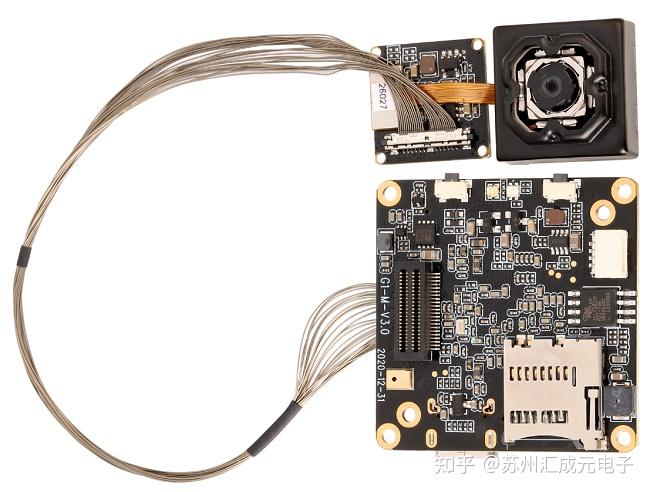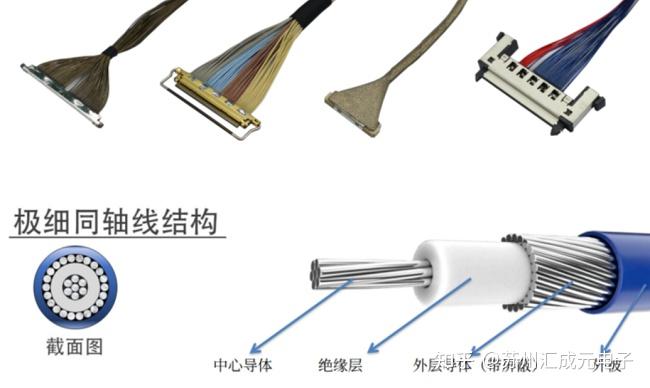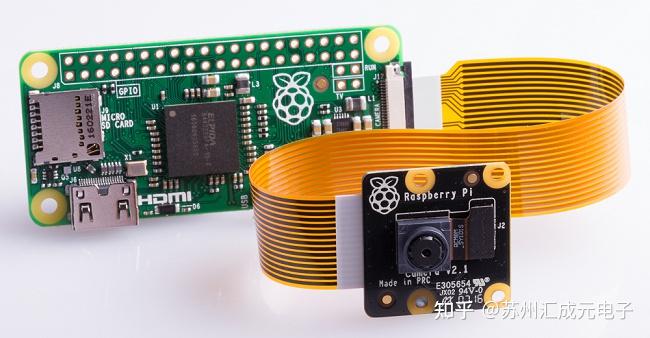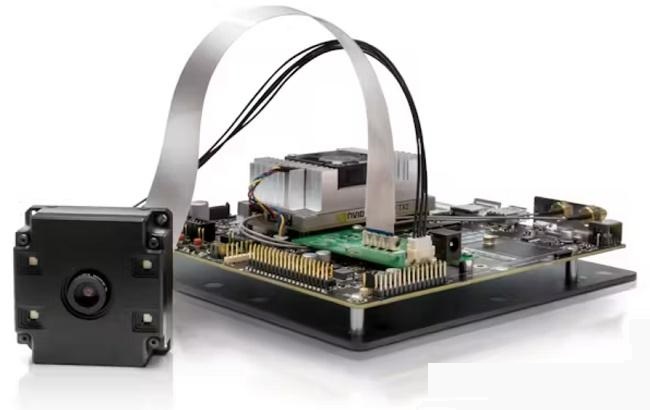Categorization:Harness Component
In smart phones, vehicle systems, robots, and other devices, camera resolutions are getting higher and frame rates are becoming faster, while the internal space of the mainboard is becoming increasingly compact. In order to achieve stable transmission of high-speed image signals within limited space, the CSI interface (Camera Serial Interface) has become one of the mainstream solutions.
In this high-speed system, there is a seemingly insignificant but extremely critical role - the ultra-fine coaxial cable束 (Micro Coaxial Cable).
What is a "micro coaxial bundle"?
So-called "extremely fine coaxial cable束" is a high-frequency signal line with an extremely small diameter and a complete shielding structure.
Its typical structure includes: central conductor, insulation layer, shielding layer, and outer sheath—the realization of high-density wiring, stable impedance, and excellent anti-interference ability within a small size.
Compared to traditional coaxial cables, the diameter of Micro Coaxial cables can be as small as AWG42 or even smaller, which is both light and flexible. They can withstand repeated bending and are particularly suitable for high-speed applications with limited space, such as smartphones, camera modules, and automotive imaging systems.
Between the CSI camera module and the mainboard, it has become the preferred wiring solution that balances performance and spatial efficiency.
Why can't the CSI interface do without extremely thin coaxial cables?
The CSI interface is essentially a high-speed serial data transmission channel.
Taking MIPI CSI-2 and CSI-3 as examples, their transmission rates can usually reach several Gbps. If FPC or thin ribbon cables are still used, problems such as signal reflection, crosstalk, and bit errors are likely to occur. The structure of extremely thin coaxial cables can exactly solve these pain points.
Its advantages are mainly reflected in the following aspects:
Impedance control accuracy
The coaxial structure naturally possesses good impedance continuity in geometry, with extremely minimal signal reflection. For the CSI interface, the stability of the impedance is directly related to the frame rate of the image and the integrity of the signal.
Strong anti-interference ability
The outer shielding layer can effectively isolate electromagnetic interference, especially in complex electromagnetic environments such as in vehicles or robots, which can significantly improve the quality of image signals and system reliability.
High space utilization rate
The Micro Coax cable is very slender, soft, with flexible wiring, which can easily pass through small areas such as hinges and gaps in the shell, leaving more room for structural design.
Outstanding high-frequency performance
With the improvement of image resolution and frame rate, the data frequency becomes higher and higher. The ultra-fine coaxial cables feature low loss and wide bandwidth, making them capable of easily handling high-speed signal transmission at 10Gbps and even higher speeds.
Key Points of Design and Usage
In the design of CSI systems using extremely fine coaxial cables, the following points need to be paid special attention to:
Impedance matching must be complete.
Not only should the cables be controlled for impedance, but connectors, solder points, transition boards, and the like should also be maintained in continuity. They are usually used in conjunction with micro high-speed connectors such as I-PEX, Hirose, etc., to ensure system signal integrity.
Line length and bending radius should be reasonable
The longer the wire, the more obvious the signal attenuation; sharp bends may damage the integrity of the shielding layer. Design should control the length and bending radius, and follow the specifications for layout.
Isolation grounding must be complete.
The shielding layer, if not properly grounded, will significantly reduce the anti-interference performance. Especially in multi-module systems, it is necessary to ensure continuous and stable grounding.
Focus on environmental and durability parameters
For wire harnesses used in high-stress scenarios such as cars, drones, and robotic arms, attention should be focused on their high-temperature resistance, vibration resistance, and bend life indicators.
Four, typical application scenarios
Mobile phone/laptop camera
Space-saving and with complex wiring, Micro Coax can achieve high-speed transmission in an extremely small space.
Vehicle-mounted camera and ADAS system
Can maintain signal stability under high temperature and strong vibration environments, ensuring reliable imaging.
Industrial vision and robot systems
With high durability and consistency, it is suitable for long-term operation and dynamic motion scenarios.
In general, ultra-fine coaxial cable束 is a signal transmission solution born for high-speed, miniaturization, and complex environments.
It has a compact structure, strong anti-interference capability, and flexible wiring, which not only ensures the high-speed stability of the CSI interface but also meets the assembly requirements of various miniaturized devices.
With the popularity of high-bandwidth systems such as in-car imagery, robots, and AR/VR, the application field of Micro Coax cable harnesses will continue to expand.
It may not be the most prominent component, but it is a crucial link for the stable operation of the high-speed imaging system.
I amSuzhou Huichengyuan ElectronicLong-term focus on the design and customization of high-speed signal cable harnesses and ultra-fine coaxial cable harnesses, committed to providing customers with high-performance and reliable interconnection solutions.
Welcome to contact us for related needs or further information:Manager Yin 18913280527 (WeChat same number)。